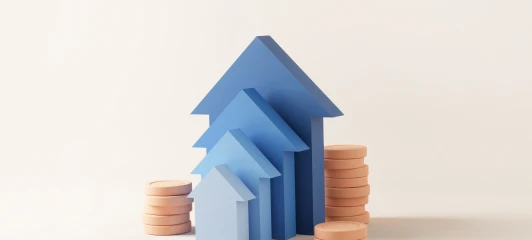Q&A: Gerry McGowan
CBD Energy boss Gerry McGowan tells Climate Spectator editor Giles Parkinson that:
– The main driver of Australia's solar business is the federal government's 2020 target and the renewable energy certificates business creates off the back of that.
– The main driver of the rooftop solar market is consumers nervous about increasing power prices and and they are trying to make themselves as independent in their energy needs as they possibly can.
– Despite a lack of interest in large-scale solar in Australia, CBD sees a much more buoyant market internationally.
– It's going to be 'really tough' to build large-scale solar in the Australian market, and that's why CBD is spending so much effort looking at international markets;
– CBD is talking to a few candidates for its first 100MW wind farm, that will go ahead regardless of a PPA – which are difficult to get, but not impossible;
Giles Parkinson: Gerry, you've managed to do, again, what many renewables can't do and that's produce a profit. But it was a reduced profit from the second half of last year, or the same.
Gerry McGowan: Yes.
GP: So, what would have been the principle drivers? You've got several things going on there. The solar business is going well?
GM: Look, the drivers for our business at the moment are all solar. So, the first half of the year, you saw the impact of the feed-in tariff coming off in Europe and what that really meant was that the world supply of solar modules and inverters were really tough to get in the first six months of our financial year because you had the feed-in tariff reducing in Europe at December 31. Since that time, what we've been able to do is we've locked in a secure supply of solar modules from our partner Tianwei. We have a 100MW capacity coming this calendar year and we have commenced manufacturing our own inverters at our CapTech facility in Melbourne. We're currently producing a thousand a month, soon to rise to 1600 a month which, we'll consume those internally within our business. So, we've been able to lock in our inverter supply, our solar supply.
The other main effect on our business has been the REC price, which has affected all people in the renewables business. But as you're probably aware, from January this year, the federal government has put a $40 floor under the small scale RECs for the rooftop solar scheme and that is going to give us a lot more certainty in the value of the REC, or the small-scale REC, going forward.
GP: So you had a crimp on margins, then, from the solar business. What is the outlook for volumes in the solar business? Because tariffs have been reduced in NSW, in particular, as well.
GM: People misconstrue that the state tariffs are really a driver of the business. They're not. The main driver of the solar business is the federal government's 2020 target and as a consequence of that, the renewable energy certificates that we create off the back of that. So, it's really a federal government initiative, not a state government initiative that drives the business. If you look at the cost of a small rooftop system, total cost is around about $8,500 and the consumer pays about $2,500, the federal government pays about $5,500 of that value.
So, the value proposition is really coming out of the federal government which has been a very stable environment and they haven't been changing the system and we think that is going to continue to drive the rooftop solar market. The driver of the market is consumers wanting to get independence and they are nervous about increasing electricity tariffs and they are trying to make themselves as independent in their energy needs as they possibly can.
GP: Does that mean that people are going off grid, or staying on grid, or are they simply wanting to reduce their bills?
GM: Yes. There's a big push for them to reduce their bills.
GP: You mentioned about the federal government's support, though. That's been wound down slightly earlier than originally thought.
GM: It's been wound back to take advantage of the decrease in cost of solar. The cost of solar is coming down at the same time. The federal government has always said they would reduce the multiplier going forward, in a predictable way. They've given the industry plenty of notice. And they've done it at a time when solar prices are reducing.
GP: Ok. So you think, then, that the rooftop solar PV market will continue even after those incentives run out because the price would have come down enough, or do you think it will grind to a halt?
GM: No, we're not seeing any sign of any slowing in the rooftop solar market.
GP: What about commercial-sized solar? You've announced today the signing of contracts in Italy. Are they firm contracts or are they just MOUs for 40MW of solar PV?
GM: They're subject to our finalising due diligence. We think it is a very high probability that we'll be going to contract. We've been dealing with this customer for quite some time now and we're seeing a lot of interest internationally for large-scale solar. It's not here now in Australia yet, but we're seeing a much more buoyant market internationally.
GP: Can you tell us which customer it is?
GM: No, we can't. It's commercial in confidence at the moment.
GP: What are the drivers then to establish 1MW facilities, 10MW facilities and 20 MW facilities in Italy?
GM: It's all driven by the feed-in tariffs in that country. So, these people have licences to build the sort of scale in Italy, they've got all the licences in place, they've been looking for a constructor that can bring good quality Chinese modules to their market.
GP: And how come CBD gets to win contracts like this? You're just a small Australian company. Surely there must be bigger and more equipped companies out there in Europe and elsewhere?
GM: Well, we are, you know, well equipped. We are getting a track record. The Italians have been having a look at our Thailand project. That's coming in on time and on budget. We spent a lot of time in these markets going to shows, moving around, talking to people. We have a dedicated international team that is building these relationships over time. We're putting a lot of effort into that area of our business.
GP: Now, on that commercial market you mentioned Italian feed-in tariffs. That is not the case in Australia, nor does it look likely. What do you see as the outlook for commercial style between 1MW and say 20MW or whatever you want to do?
GM: It's going to be really, really tough in our market, and that's why we're spending so much effort looking at international markets.
GP: Some people think that eventually commercial-sized solar PV might be able to be priced competitively with wind. Do you share that outlook and that view?
GM: I think at the time, yes. I definitely believe that.
GP: What sort of time period do you see?
GM: Four years.
GP: Four years? Ok. Let's talk about wind. You guys are in a joint venture with a Chinese company, Datang. You are able to go ahead with developments because Datang gets funding from the Chinese banks which I guess means you don't have to get PPAs in Australia which would be very hard to get. Can you just explain to me what your plans are and what your outlook is?
GM: Well, our joint venture wants to construct 1500MW of wind generation in Australia over the next three years, which is a lot as we know, and we can only do it with a partner like Datang and Tianwei. They bring their balance sheet, their expertise and banking relationships. Now, PPAs are difficult to get, but they're not impossible to get. We're talking to quite a few candidates for our first 100MW wind farm. That will go ahead regardless of a PPA. If we need to have exposure to the spot market, then the joint venture is willing to do that for the first project because we think we can construct wind at a price that hasn't been seen in Australia to date, so we think, you know, we're going to bring something into the market that's not currently there at the moment, in terms of pricing.
GP: What sort of price are you talking about?
GM: Well, I'm thinking our pricing is going to be around the $90/MWh hour mark.
GP: And that's because you have cheaper Chinese turbines?
GM: We've got better turbine pricing and better pricing of banking facilities.
GP: Where is this project going to be?
GM: It's going to be at a site called Taralga in New South Wales. It is a site that's been developed by RES and we expect to start construction of that next month.
GP: Now, what's your take on the various mechanisms that are being discussed in politics at the moment? Is the renewable energy target going to your satisfaction?
GM: Well, the 2020 target, I think, is locked in place and I think both sides support that. I think the disturbing thing for Australia and our industry is just the uncertainty of policy, such as carbon policies and so on where you have one side promoting it and the other side saying that they'll get rid of it if they get into power. It's just typical of the way renewables policy settings have been driven in Australia.
GP: But surely you find these sorts of disagreements in other countries?
GM: Well, when you look at the European countries or the other countries we've had exposure to, like Thailand and so on, it is very predictable, the policy setting, and you can plan on it. And what politicians keep on ignoring is that we're building 25-year assets and we can't deal with movement in policy that changes every 10 minutes.
GP: Can I just go back to your wind farm plans? You talked about wanting to build 1500MW. You did say the first project would go ahead without PPAs because you can get the financing for it. What about future projects? Will you rely on PPAs?
GM: Well, we have plans for how we're going to deal with future projects, but yes, we would like to think that we can rely on PPAs. I mean when you look at the way PPAs are constructed, you'd need a value for your renewable energy certificate. In a large scale area, they're really controlled amongst the big retailers and generators who have the liability. There is no onus on them to contract, but that is in the market, which is probably a flaw in the legislation in some ways.
GP: That said, there are a lot of people going to be looking for PPAs around about the same time. That's going to be a bit of a train crash, isn't it?
GM: Well, it could be a bit of a train crash, but it's going to come back to value, isn't it? It's who is the lowest cost producer, in theory, should be able to get access to the PPA.
GP: You've revealed in your announcements today that you've had to sell some RECs (Renewable Energy Certificates) because of capital management. You guys got cash flow problems? And what are you doing about it?
GM: Well, the issue for us is that we haven't had any debt in the company. We're now just putting some debt in the company to enable us to manage that. The company really hasn't had debt over time and it's been that way because of the way it has evolved. But we are now putting debt lines in place that means that we don't have to sell our certificates on the spot market.
GP: Your stock, like many other renewable energy stocks, has not done particularly well over the last year or so. What do you think will change, if anything can change, investor sentiment?
GM: Well, I think what you're seeing in our stock is that, for the past year at least and probably two years, we've been putting relationships and building blocks in place for us to build a sustainable renewable energy company that is based on wind and solar. Over the last couple of months we've been out there talking to people and showing them what we're doing and telling them what the potential is for the business. You've seen our stock price go from the 9c or 10c to the 16.5c, 17c that it is lately. We have signing ceremonies for the joint venture occurring March 21 and I think the true implications for that joint venture will be seen at that time.
GP: So, you think you've turned the corner?
GM: Yeah. I do.
GP: Well, good luck with that and thank you very much.
GM: Thanks, Giles.
















